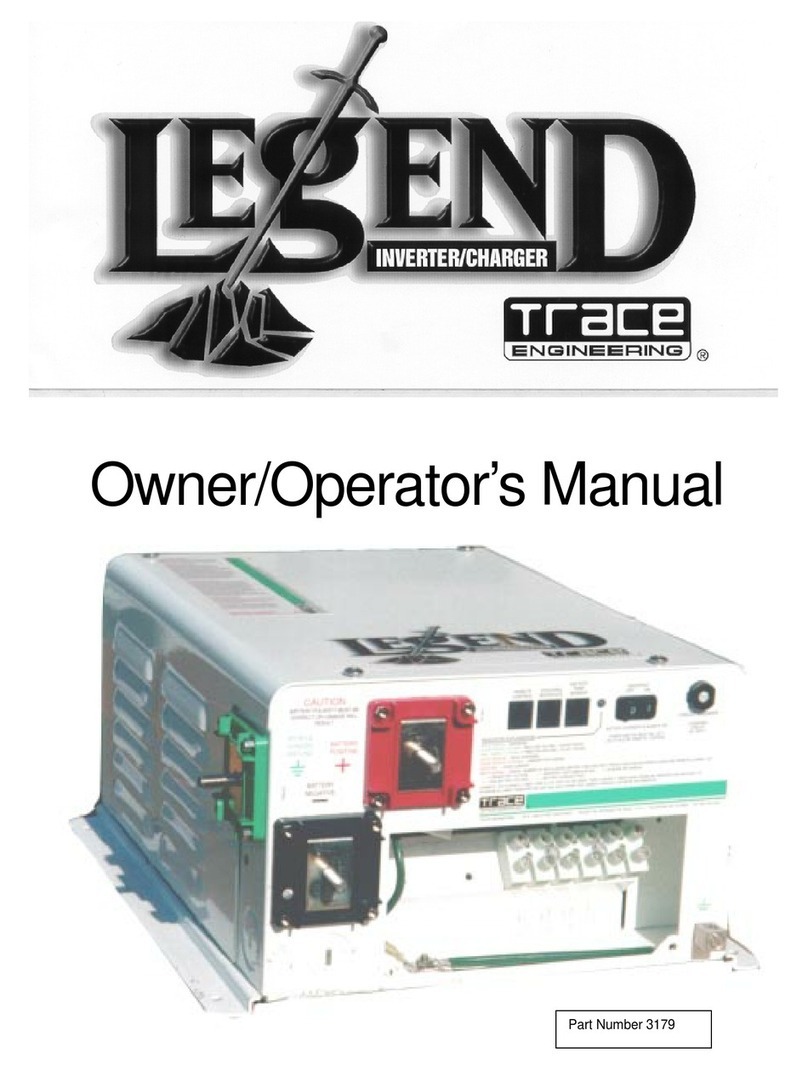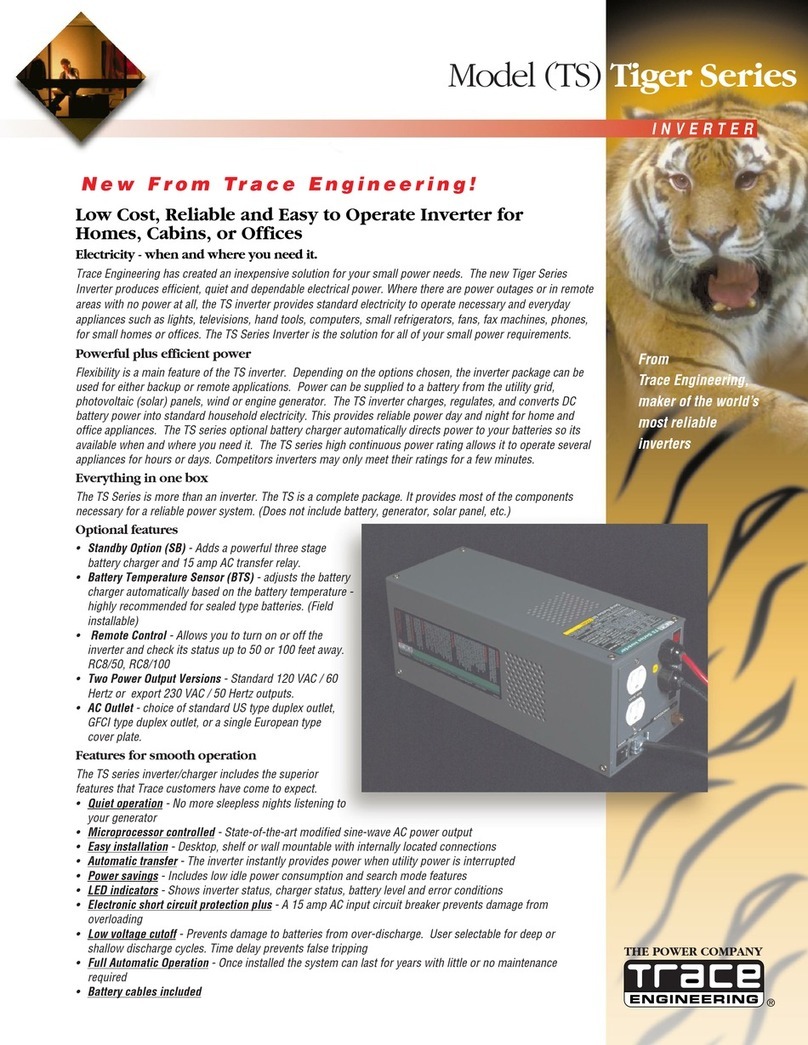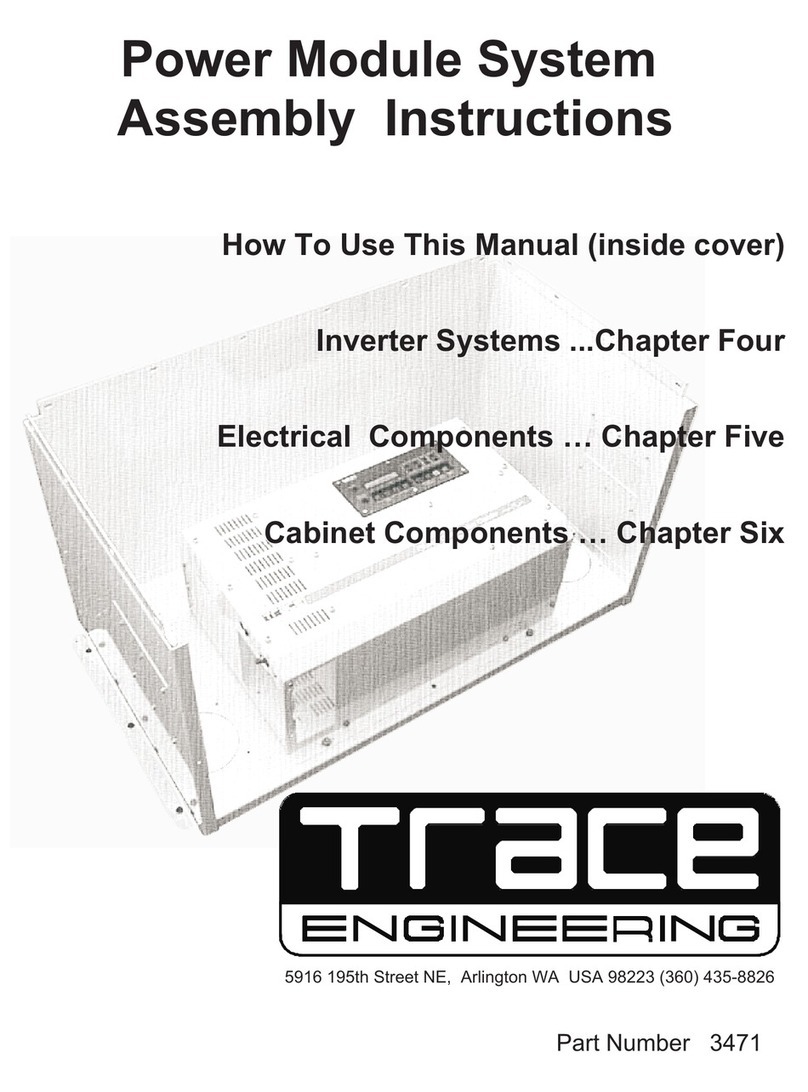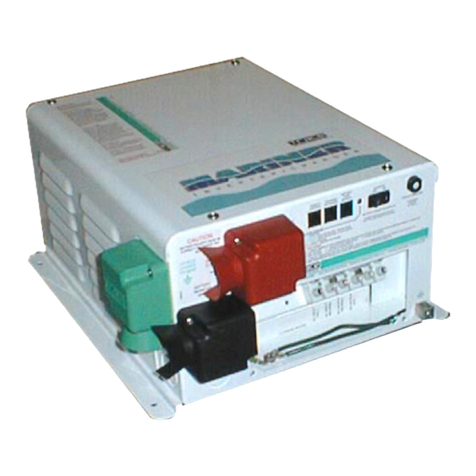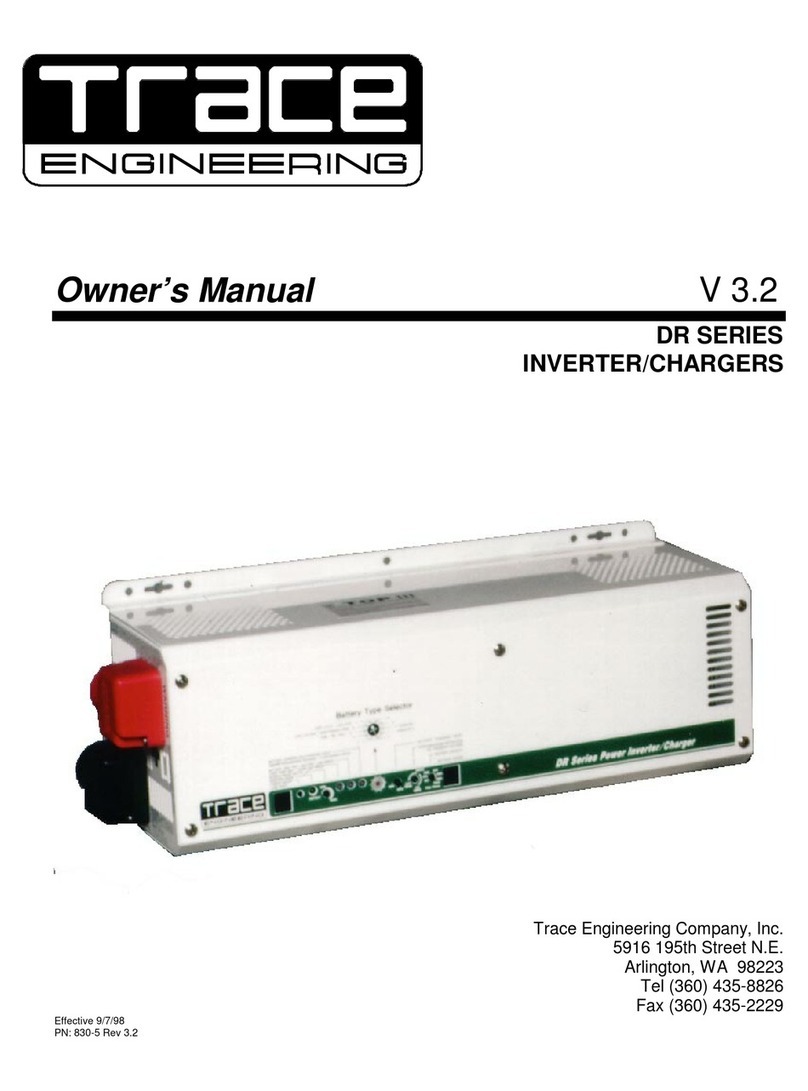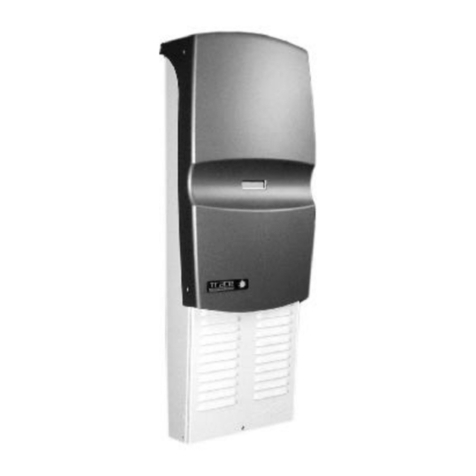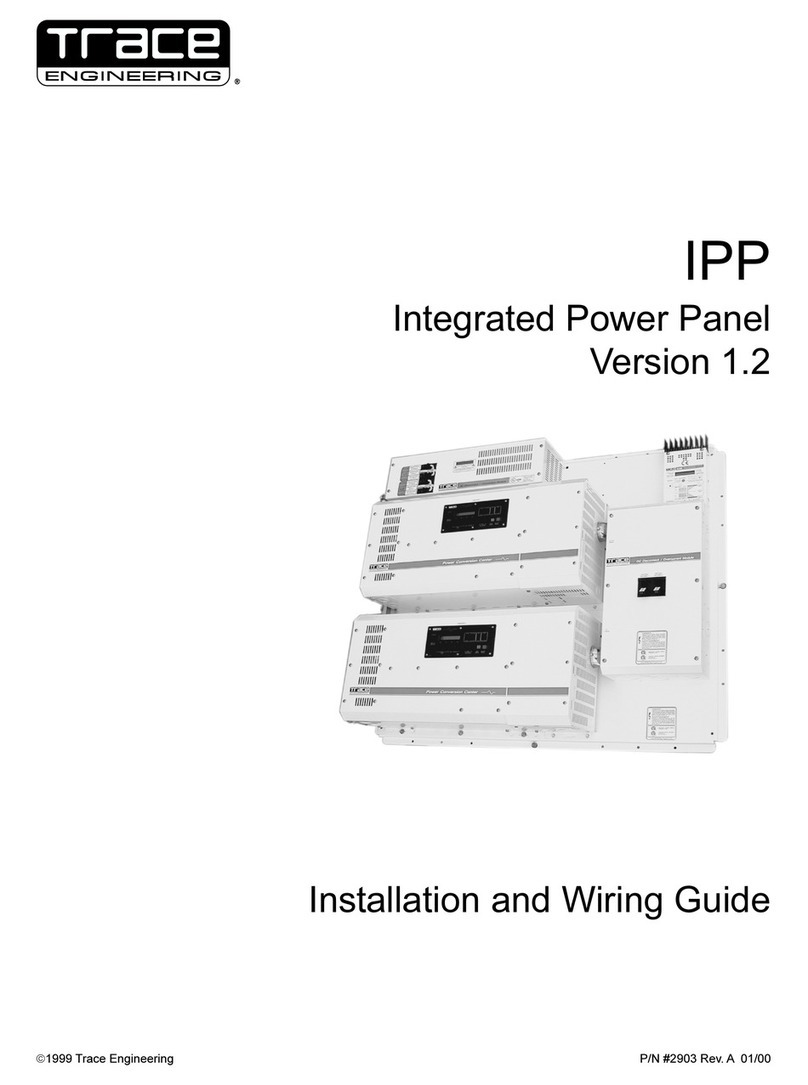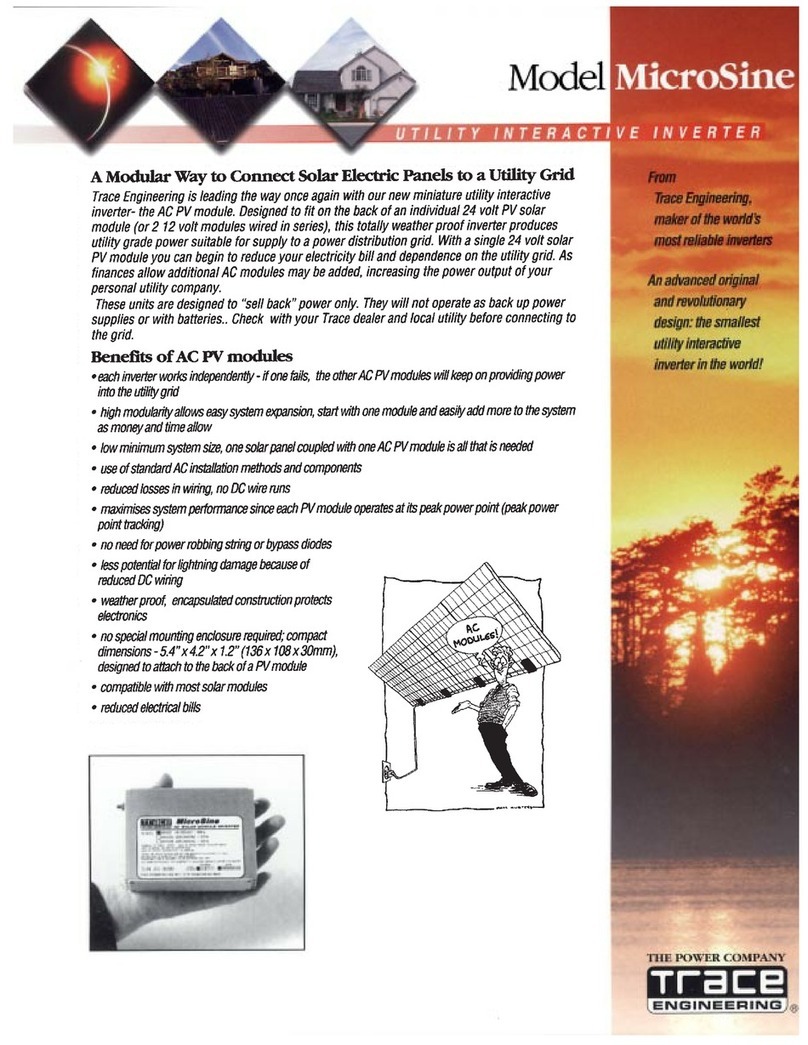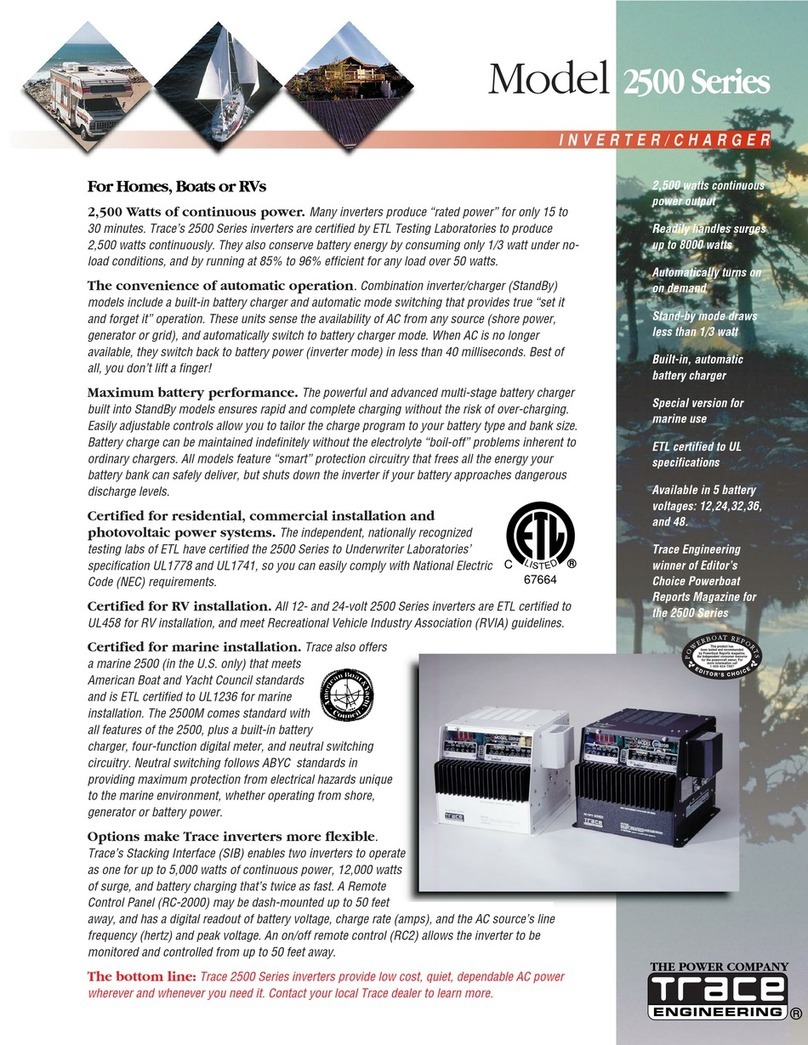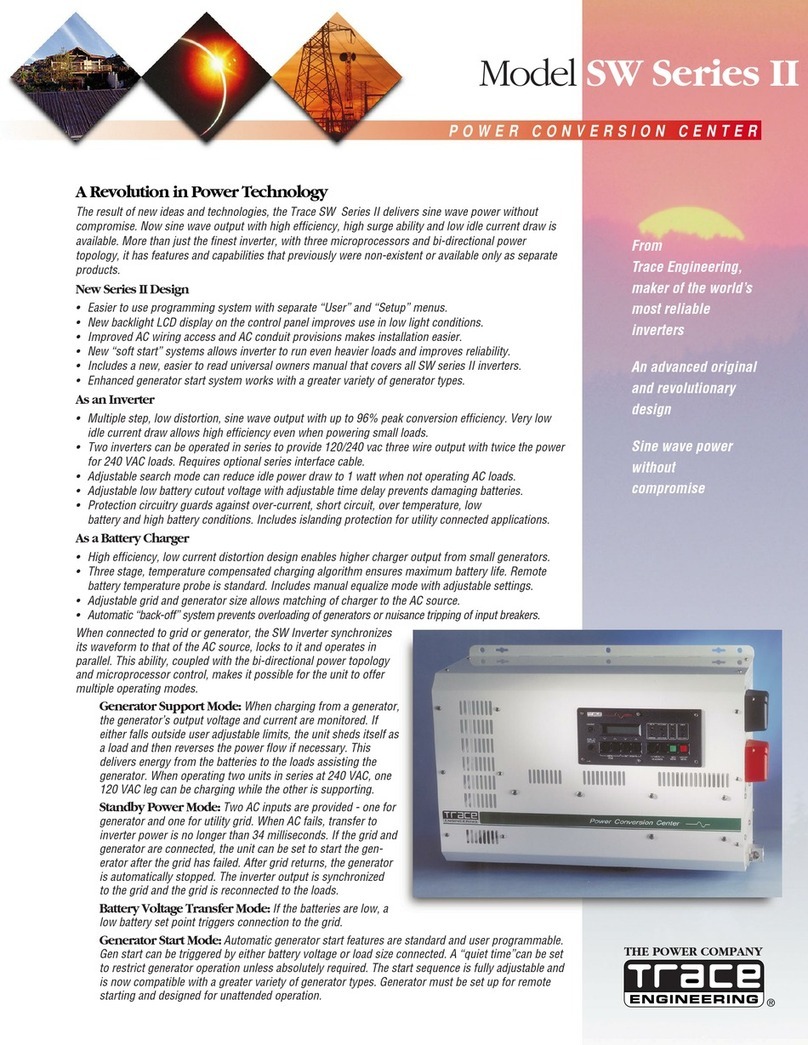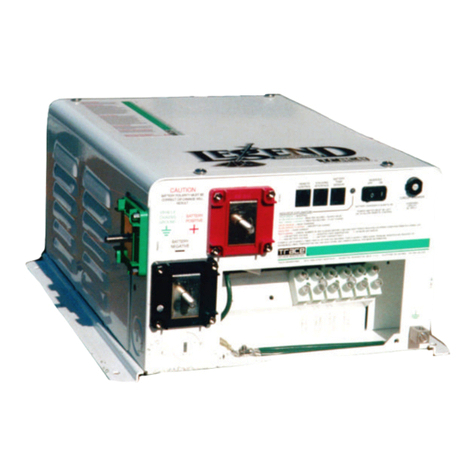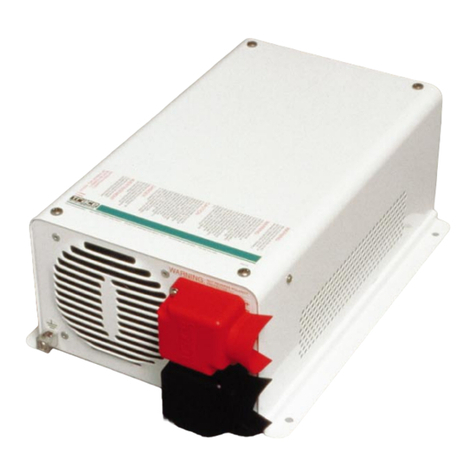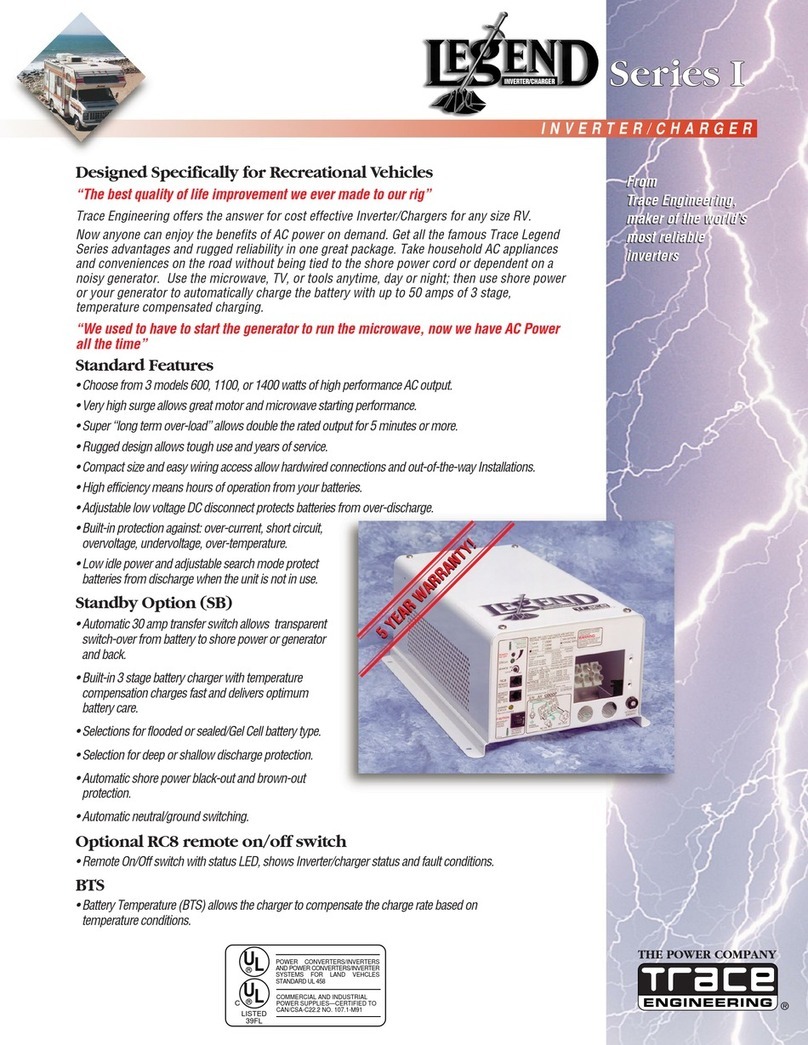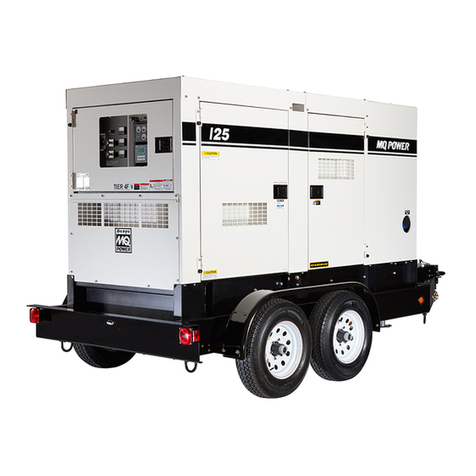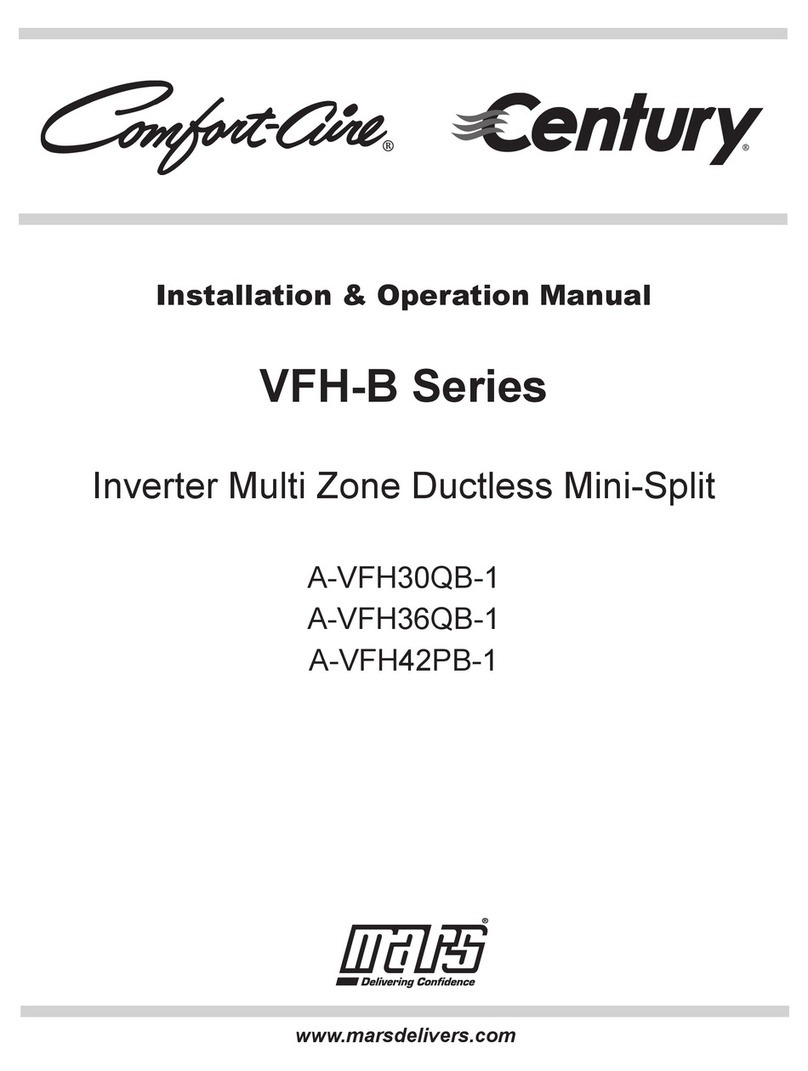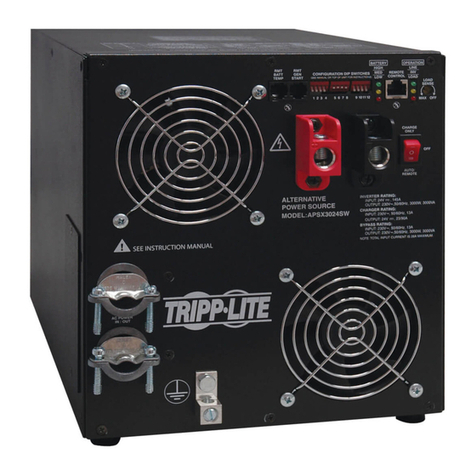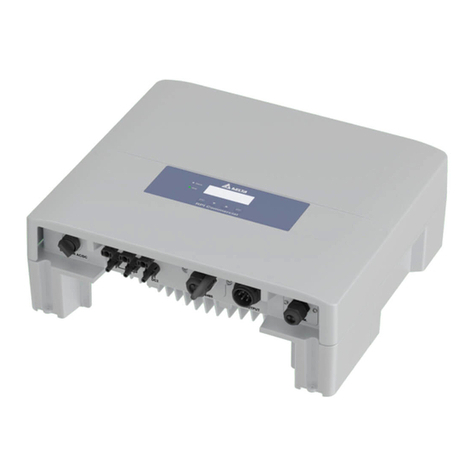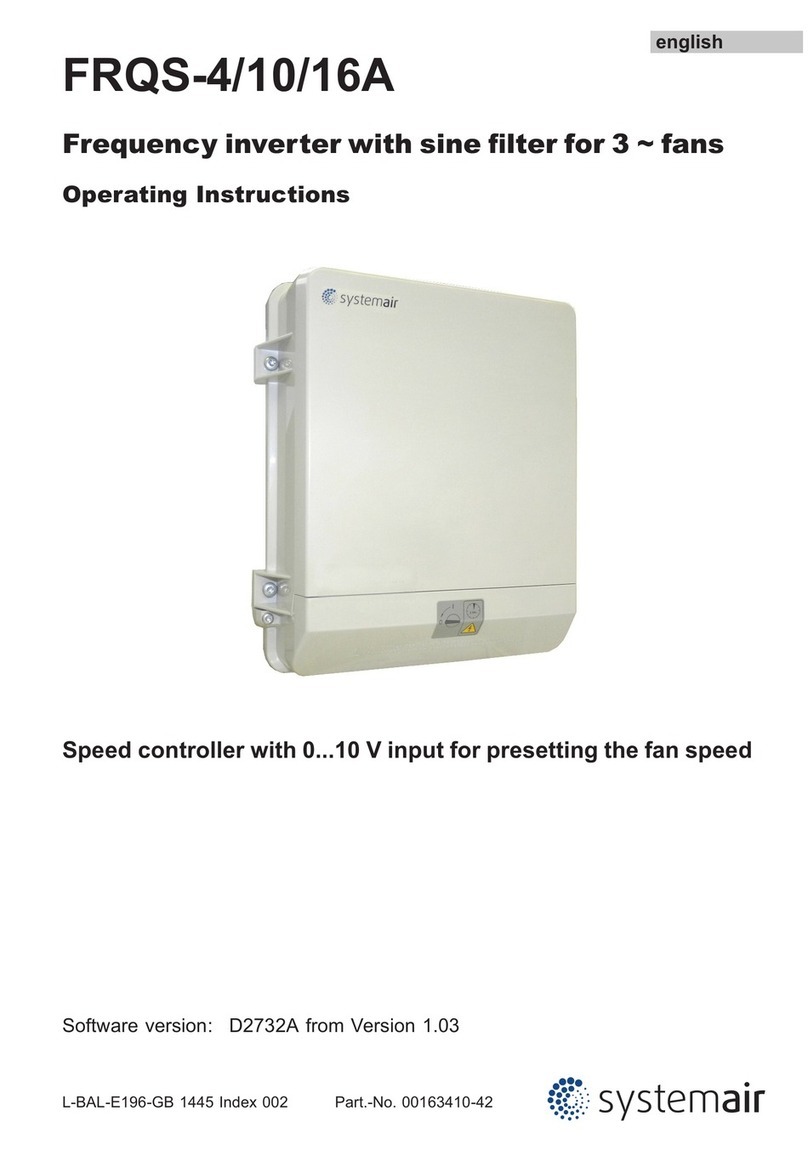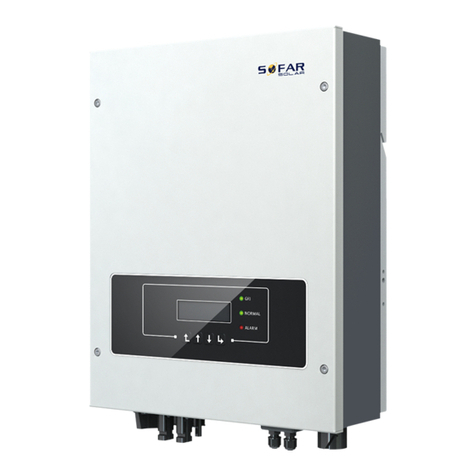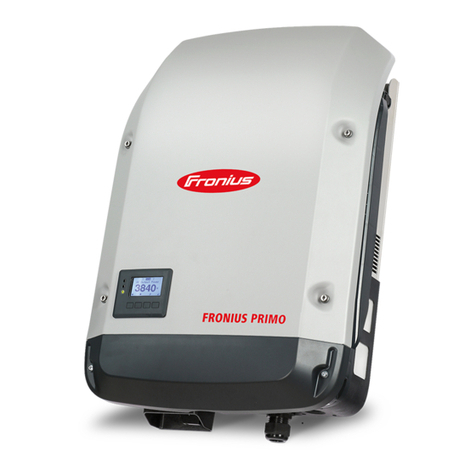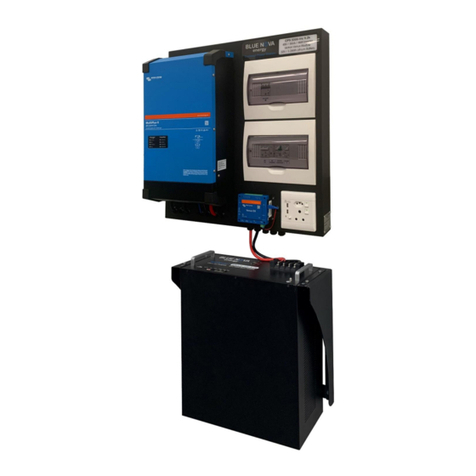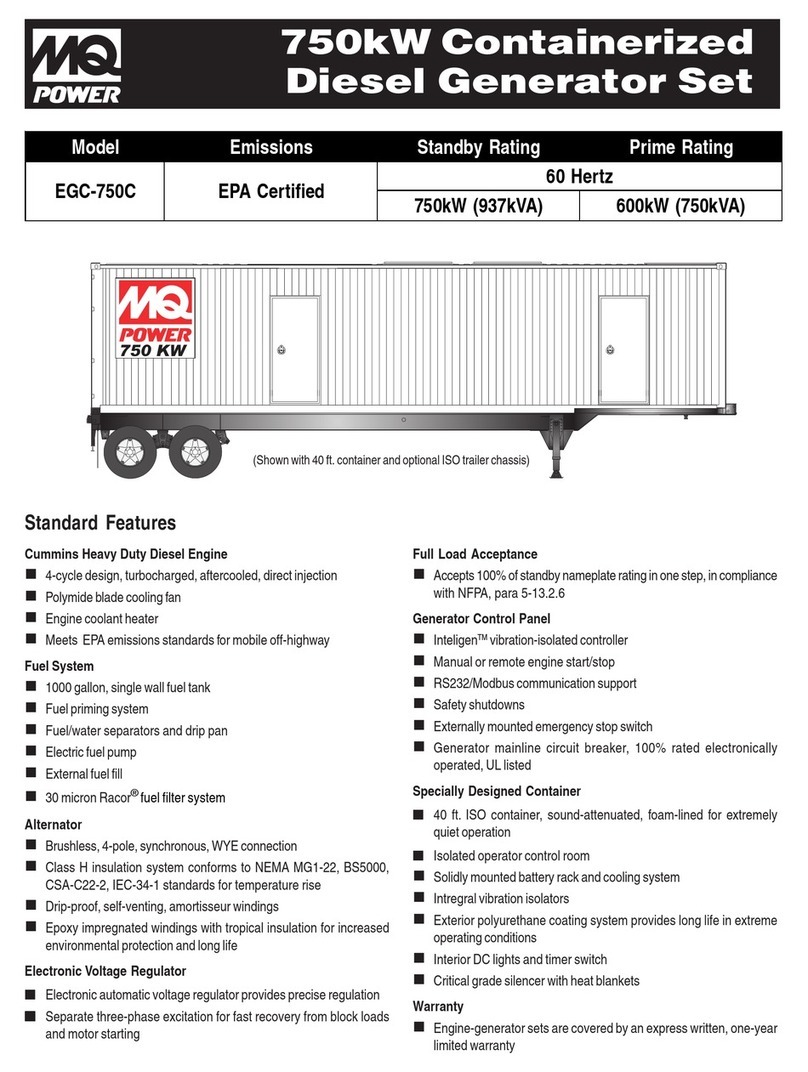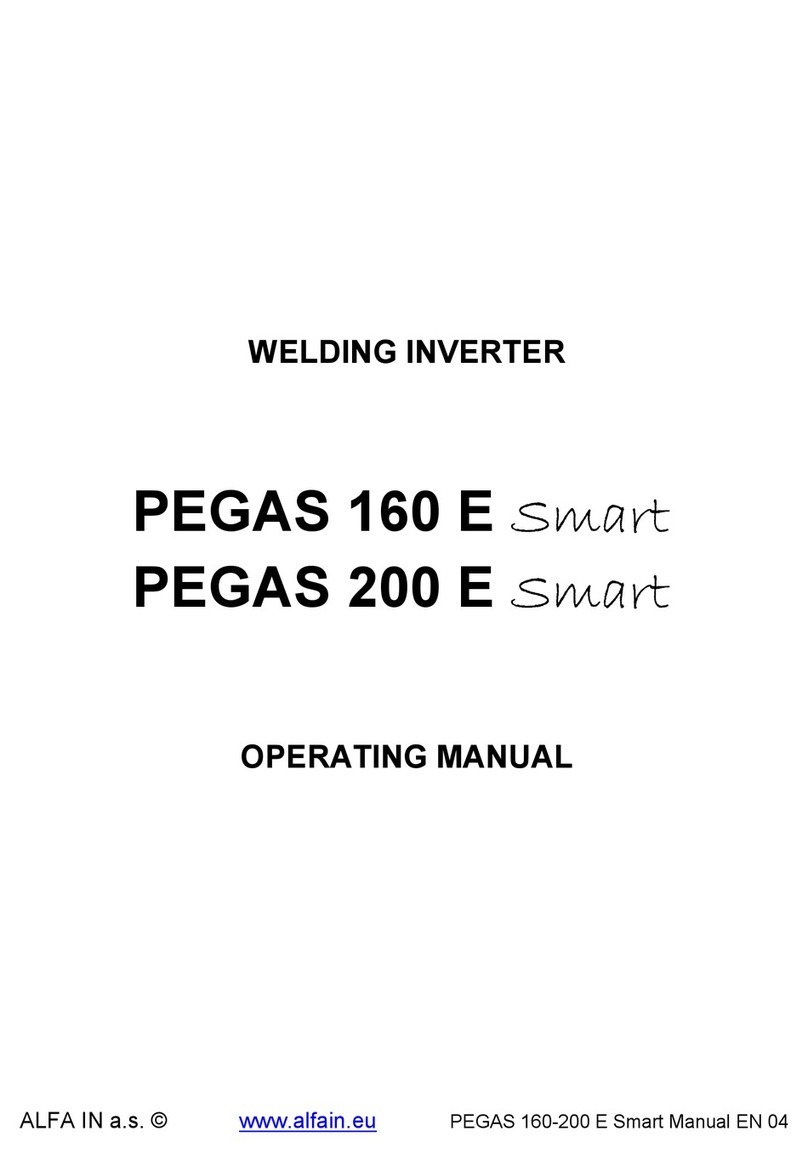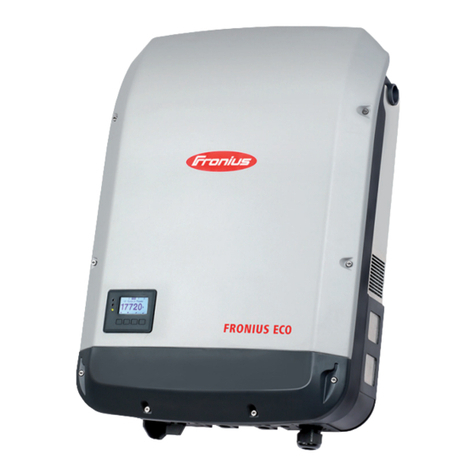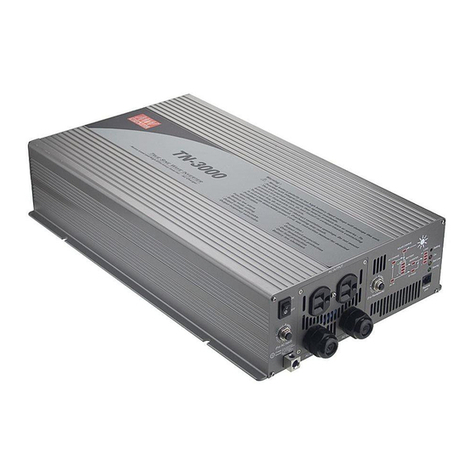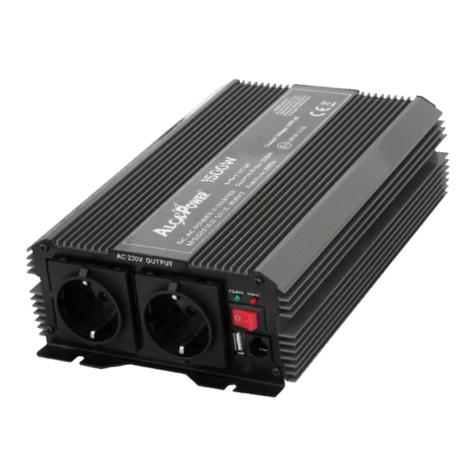
DC Cabling
AC Cabling
Discharge
Transfer Sensitivity (SB Option Only)
Use #6 AWG battery cables, Cables are available in 3, 5,
and 10 foot lengths (BC3, BC5, BC10). Strip the
insulation about ½“ (12 mm) from the end of each wire.
Using a Phillips screwdriver, remove the six screws from
the top and side of the inverter and remove the cover.
Loosen the uppermost strain relief by rotating the cap
counter-clockwise, and insert the stripped end of the
positive (+) battery cable through the strain relief and into
the cable lug marked ”Battery Plus” on the PCB. Using a straight-blade screwdriver,
tighten the screw in the lug to 12 foot-pounds, then tighten the strain relief. Repeat for the
Battery Minus (-) cable. Replace the cover and reinstall the cover screws.
On AC outlet equipped models, just plug-in the load or appliance to the pre-wired outlet on
the back panel of the inverter. On units equipped with a factory-installed battery charger,
wire the AC input circuit to the charger board as shown in the section of this
booklet (some configurations may include a pre-wired AC line cord).
The standard TS series inverter requires no user configuration. When you have the
standby battery charger option or the PV controller option, you can configure the TS Series
for your specific system requirements. Configuration options include battery discharge
voltage (LBCO), AC voltage transfer sensitivity, and battery type. To change configurations,
disconnect any AC or DC power supply and loads from the unit and remove the cover from
the chassis. Remove or install the jumpers from the configuration pins as shown in the
illustration at right. If the unit is equipped with the SB charger option or the PV option, it
may be necessary to remove the option board to gain access to the configuration jumpers.
See the illustration on Page 9 to locate the configuration pins on the main printed circuit
board (PCB)
You can set the inverter to stop inverting when the battery to which it is connected has been
discharged to 11.7 volts for 5 minutes (shallow discharge) or to 10.6 volts for one minute
(deep discharge). The factory setting is Deep discharge Shallow discharge means less
battery stress and more charge/ cycles. Deep discharge allows the batteries to be
discharged almost completely. This usually results in somewhat shorter battery life, but
fewer charge/discharge cycles. To select Shallow Discharge, remove the jumper from the
configuration pins. For Deep Discharge, the two pins must be connected by the jumper.
The TS inverter can be configured to begin inverting whenever grid voltage falls to 95 volts
RMS (UPS mode) or to delay transfer until line voltage falls to 80 volts RMS (Gen mode).
The factory default, UPS mode, is relatively intolerant of line voltage fluctuations to prevent
Options
User Configuration Options
A jumper is a small, rectangular piece of plastic with two square
holes in it that fit over two pins as shown in the illustration at left.
A jumper contains an internal conductor that joins the two pins,
completing a circuit. When the jumper is removed, the circuit is
interrupted. Jumpers are often used for changing configuration
parameters. When a jumper is not connecting two pins, it can be
stored by slipping it over just one of the pins instead of both. This
will have no effect upon the configuration, but will keep the
jumper handy for future use.
Depth
6
Jumper
On
Off
Pins
Copyright Trace Engineering Co. Inc. Tel (360) 435-8826 Part Number 3141
5916 195 Street, NE Fax (360)435-2229 Effective Date: July 15, 1998
Arlington, WA 98223 USA www.traceengineering.com Page
th
















